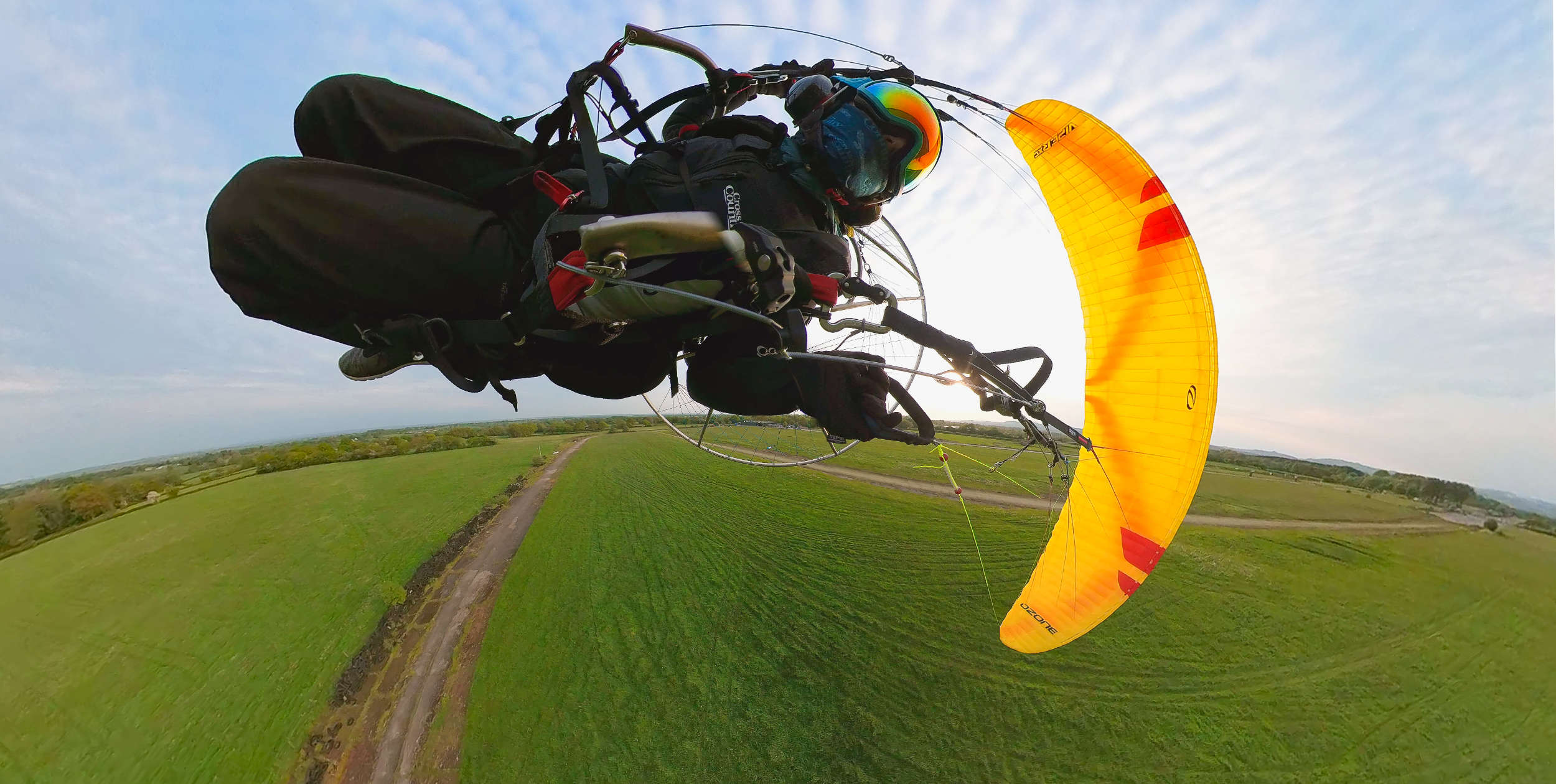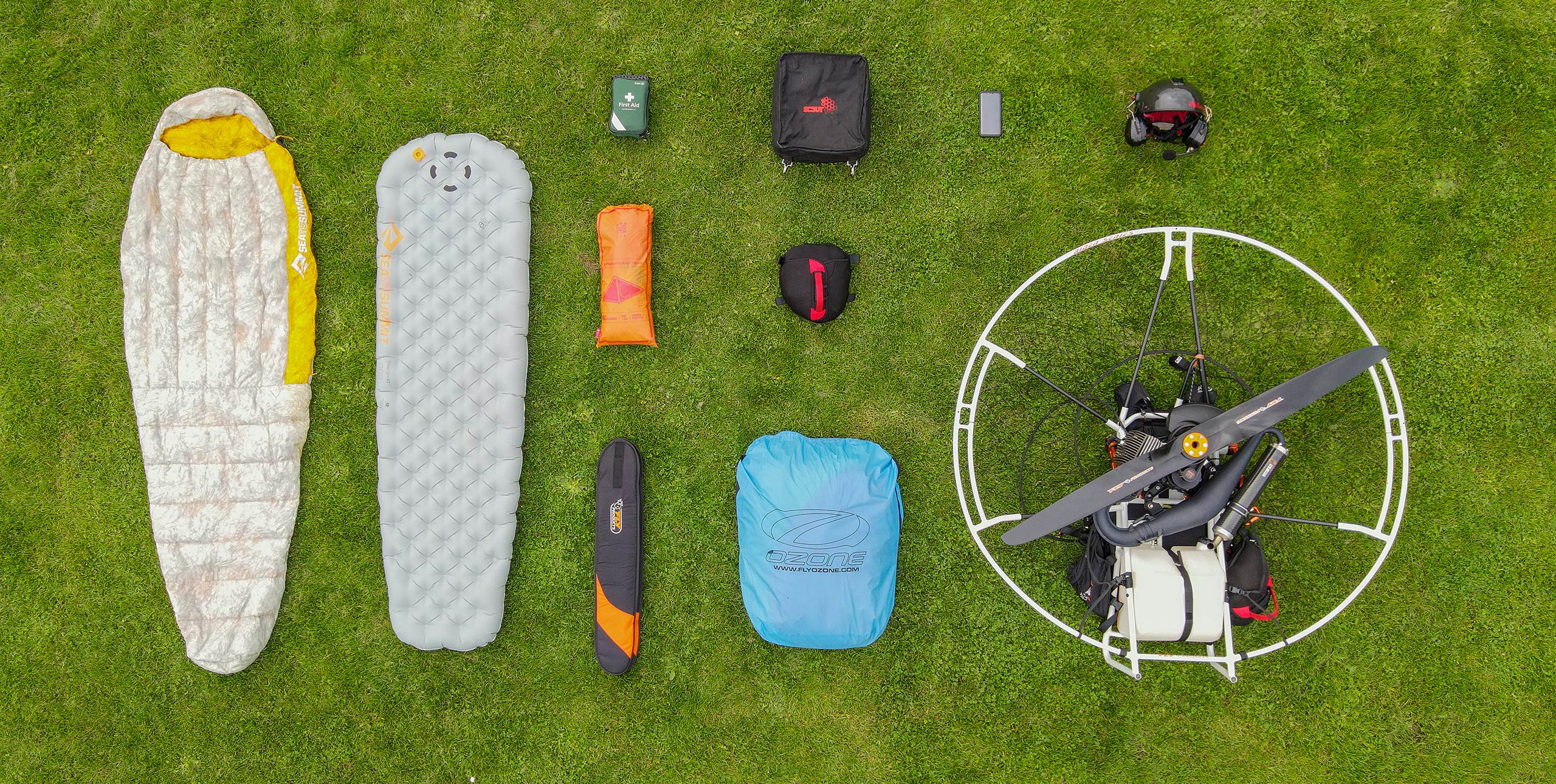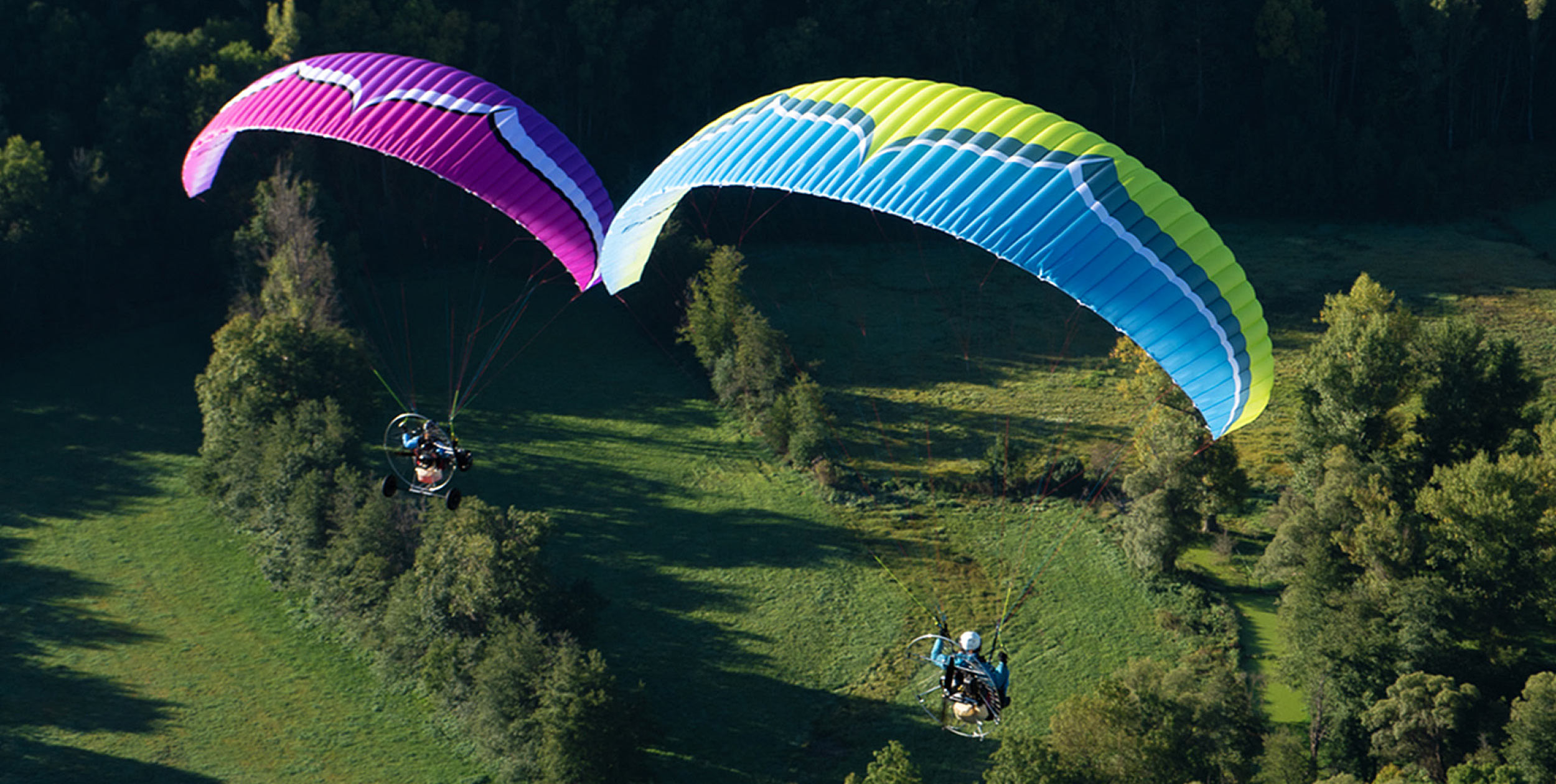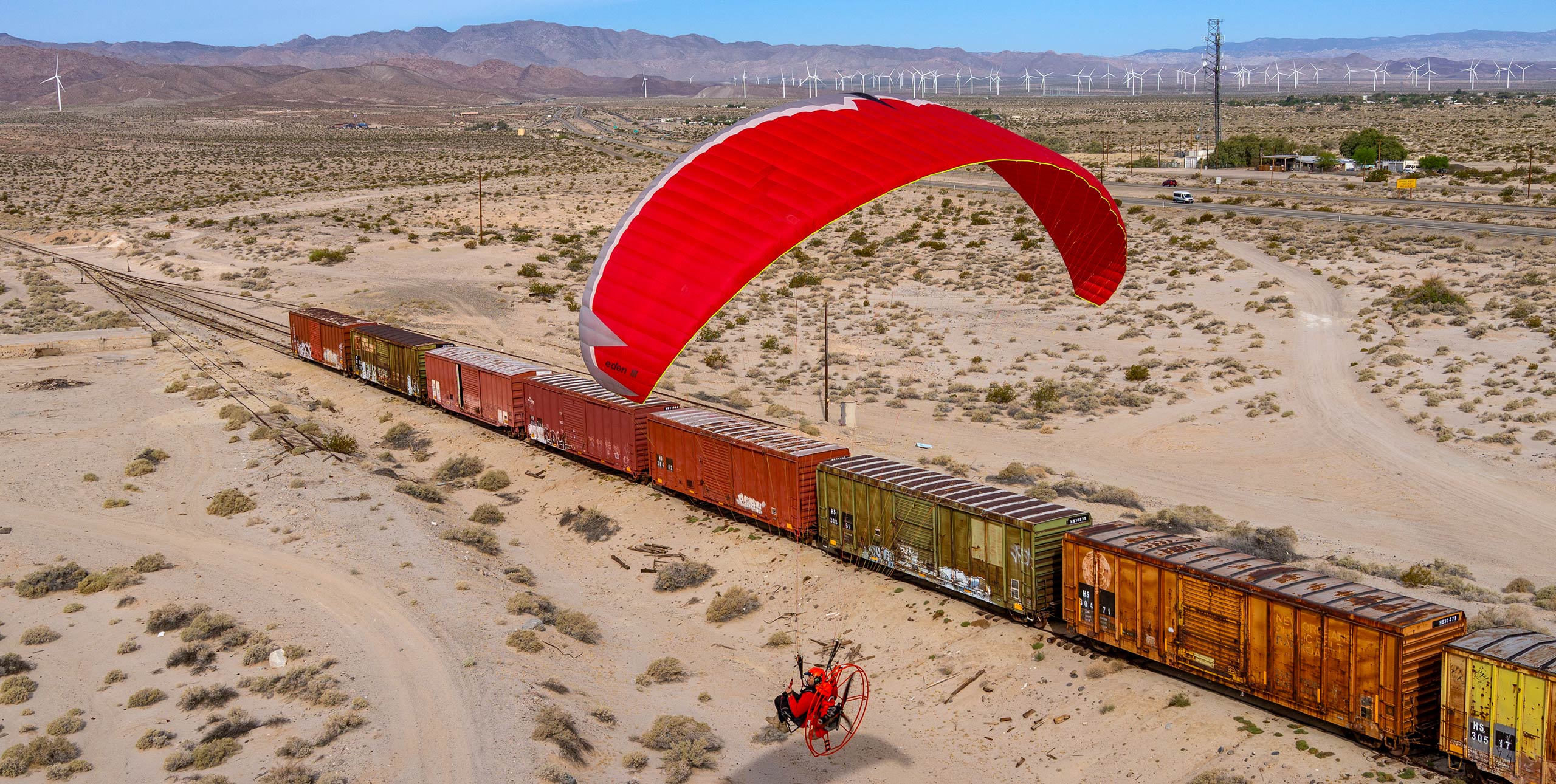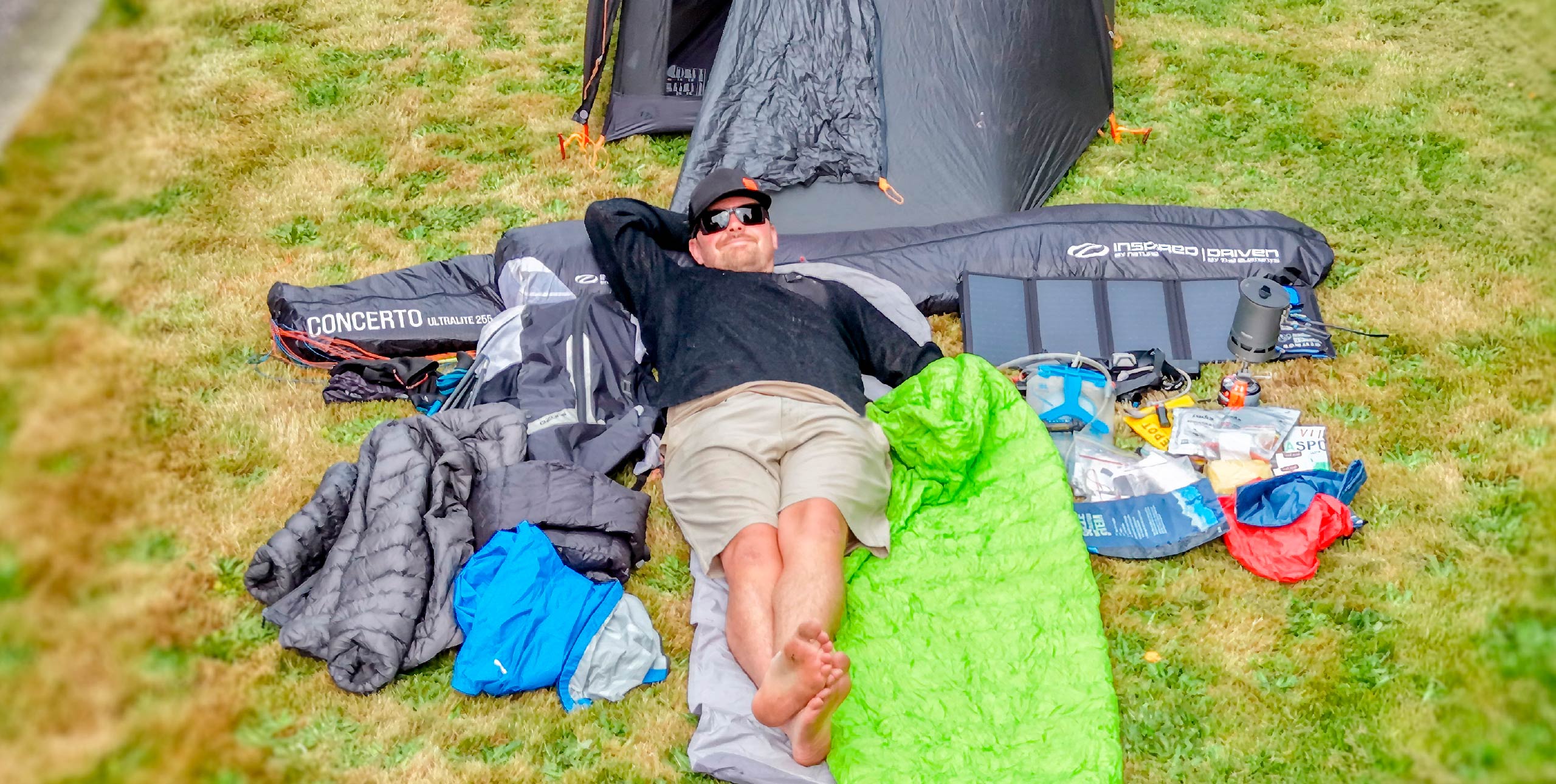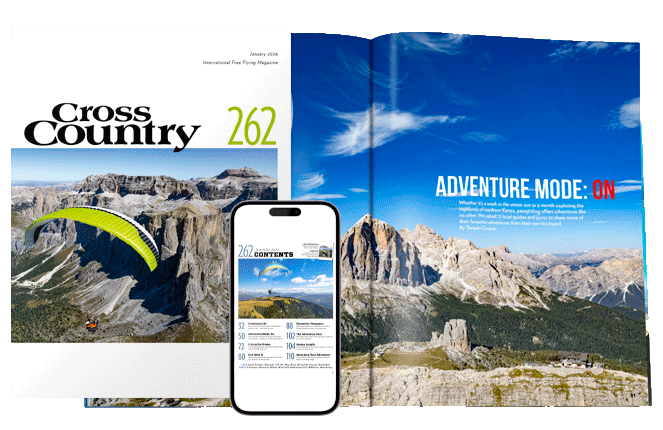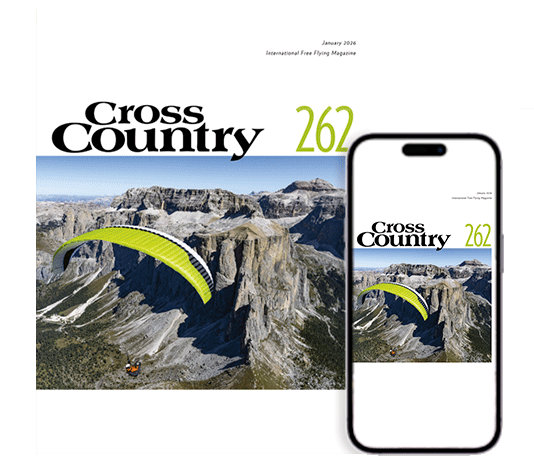
The Eurofly Snake is a nano trike – the smallest, lightest combination of a hang-glider wing and trike suspended underneath. Nanolights have been around for decades but are now part of a new class of aircraft in the UK that does not require a licence for the pilot. The exemption for this was granted after a paramotor pilot sought permission to fly with wheels as a disability aid, something he should have been able to do under the UK’s Equality Act.
The exemption allows wheeled powered hang gliders or paramotors to be flown without a pilot’s licence, subject to a maximum weight of the empty aircraft plus full fuel to be under 70kg, or 75kg if an aircraft-mounted reserve is carried. This brings the UK into line with many other countries, where nano trikes are also unregulated.
Who’s it for?
It’s aimed at pilots who’d like to soar, but haven’t got a hill to fly from, those who can no longer foot-launch for any reason, anyone wanting to fly an ultralight but wanting the freedom from the cost and complexity of a licence, and those who’d like a compact aircraft that can be stored in a shed or garage without the need for a hangar. The promise is that it folds up and fits in the boot of your car.
There is a choice of wings for pilots who want the “texture of the air” feeling you get from a hang glider, or the more stable, more microlight based experience, as this trike can be bought with either option.
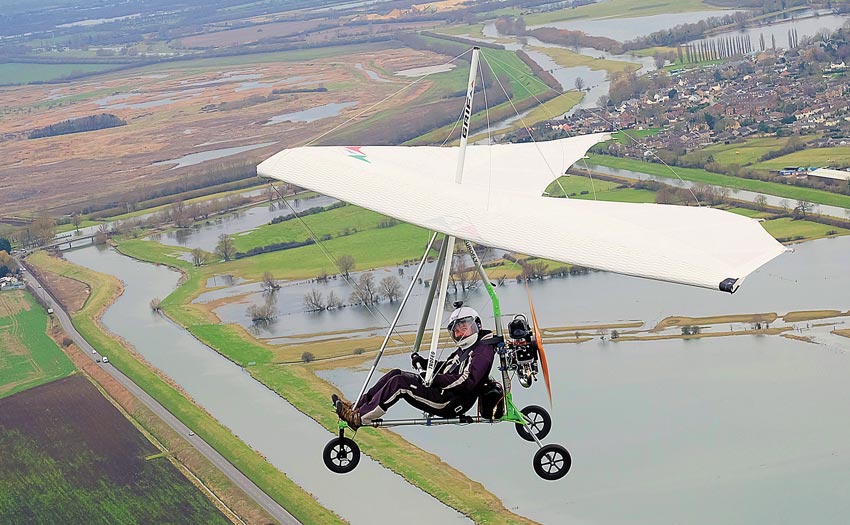
What’s it like?
The Eurofly Snake can be bought with a Grif 3DC wing, a hang glider-type wing with 62% double surface, which packs up into a bag 5.32m long that is the same as the average free-flying hang glider. It weighs 27.5kg (similar to a free-flying hang glider), and is easily transported on the roof of a car.
The trike also packs away: both rear suspension legs take about five minutes to remove, and the pylon (the tube connecting the trike to the wing) folds down. It’s then small enough to fit into the rear of a medium-sized estate if the split seat is folded down.
The other wing option is the Aeros Fox 13T, which also folds up into a bag, but can, as an alternative, fold away into a short-pack bag without being removed from the trike. This option would allow the owner to wheel the folded wing on the trike into a very small (and therefore cheap) spot in a hangar or onto a purpose-built trailer to take away. Whilst this option is fully tested on the Peabee, another nano, it’s just a possibility for the Snake.
The engine offered as standard with the Grif 3DC wing is the C-Max C 175, a free-air cooled, single-cylinder two-stroke with a counter-balance shaft running off the crankshaft to reduce vibration. It’s got a recoil starter, to save weight. The engine runs on a 3% premix with synthetic oil specified. Power output is 27hp from 174cc.
Propeller choice is between a two-bladed wooden Cisco offering or a carbon-fibre Helix one. Airplay (the UK importer) thrust tests indicate that the wooden propeller offers a tiny bit more thrust, but might be more vulnerable to damage. Fuel burn for the day I took it flying was between three and four litres an hour.
Rigging is very quick and simple. The wing will rig flat or on the keel like most hang gliders; if the winds are very light and the ground muddy you’d choose to rig up on the keel to save the wing getting dirty. There is a keel extension available for this.
With the assembled wing parked nose-down into wind, the rigged trike can be connected up to the hang point, and then the trike pushed back so the front wheel goes back over the base bar. The keel ends just before the engine so there is sufficient clearance to get the keel touching the pylon, then you can lift the wing up on the pylon and insert the single pin that holds it in place. After that, there are the usual two pins to fit the front strut. Secure and connect the tank and you’re ready for pre-flight checks.

The flying experience
You’ll need a flat field with a good quality smooth surface for a good 200m and clear of obstacles well beyond that. We flew from a farm airstrip and the 400m runways available were way beyond what we needed. It’s possible to get off the ground in well under 100m.
The Grif wing gives the flying experience of a very agile hang glider: the first turn was initiated with a very light grasp on the bar, a quick flick to the left and a co-ordinated push out to put the trike in a 60-degree banked turn very, very quickly. The roll response to the initial medium-sized input is sharp and immediate. It’s this and the feedback you get through the bar about what the air is doing that makes the Grif wing different – with the very light touch required to pitch and roll the wing you can feel things through the bar that tell you what the air is doing.
It’s this sort of agility and feedback that would make it an excellent wing for soaring with the engine off. Even without a vario you would be able to feel where lift and sink were, and be able to tell where the edge of the thermal was to attempt to get into it and centre the core.
A few times I caught my own wake and was able to feel the texture of the air rather than just a bump, a bit hard to explain if you haven’t flown in thermals in a flexwing or fixed-wing glider. The playful nature of the Snake took up a lot of the first flight and was unfortunately curtailed by checking things like speeds and stalling. It’s a blast!
The wing is very light in pitch and roll, but linear and with feedback. That big area of light pitch comes to an end as you get to within 15cm of your stomach, where it gets heavier, with the added observation that when you get within the last 10cm of travel, you can pull in further against higher resistance but the speed doesn’t seem to increase much.
The polar curve seems really flat, and you’ll find this when you try to dive off height, on an approach say. Even in stronger winds the Snake cuts into the air, pushing forward rather than losing height. You can lose height effectively in a slipping turn, that is, turning sharply with the bar pulled in.
At idle, the Snake has to be taken to the front strut to stall, and has to be slowed down quite sharply to get a “proper” stall. Without that and in calm air, you simply get into wallow mode, although its wallow mode isn’t as lacking in roll response as you’d expect. With the sharper speed reduction, and the bar touching the front strut, you get a well behaved, small nod and a little pitch down, and the machine picks up speed at which point you’d let the bar back. Height loss is minimal, and the whole thing feels like a non event.
Landing
Landing the Snake is easy, even in a cross wind, and if you already have any trike experience, the low speed makes it simple to judge the point at which to hold off. If you haven’t got any trike experience, then you will need to do some training.
Although theoretically you can fly nano trikes without a pilot licence in many countries, in reality, like paramotoring, you’d be wise to get proper instruction. Airplay Aircraft, where I spent my test day, has an offer on that gives five hours of free dual training in a two-seater microlight. The fact that the instructor is David Broom, an FAI World Air Games microlight gold medallist, is a bonus.
The other wing option, the Aeros Fox 13T, offers a slightly more damped flying experience, still nicely agile, but with more filtered feedback, which would suit someone looking for a more conventional powered flying experience.
Steve Uzochukwu has been flying hang gliders since 1989, and paragliders since 1990. He works in the broadcast industry as a freelance engineer and technical manager. He flies a Gin Carrera+ and an AIR Atos, and also flies weightshift and three-axis microlights. Steve first wrote for Cross Country in 1993.
To stay up to date and read our reviews first, subscribe to Cross Country


